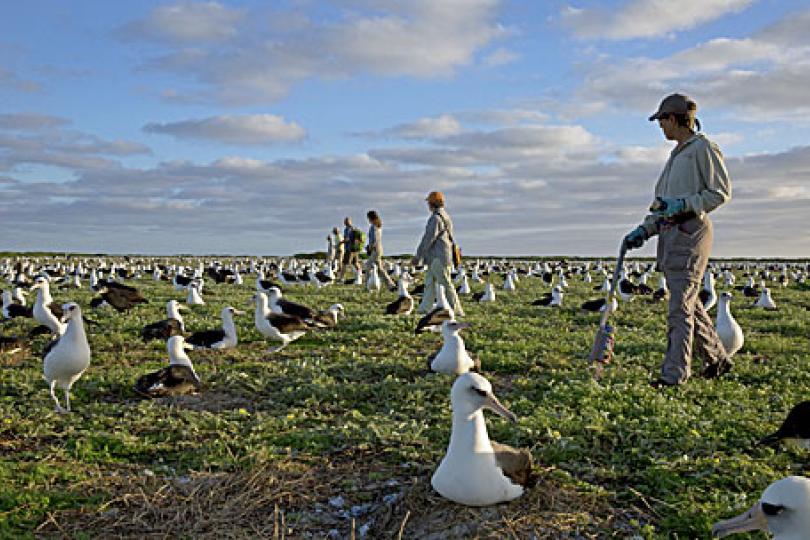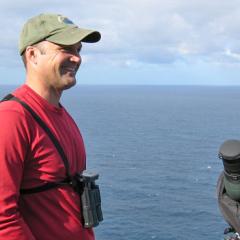Bringing Climate Change into Conservation Communications
Brad Keitt (1997) has already been working to prevent extinctions caused by non-native species introduced to islands for decades. His non-profit, Island Conservation, prevents extinctions of native species by removing invasive species from islands. This is important because over half of the world’s critically endangered species currently live on islands, over 90% of all recorded animal extinctions have been on islands, and invasive species are a factor in more than two-thirds of these extinctions.
But a new challenge has Keitt rethinking how his organization plans its projects and communicates about them. Some of the places they have worked may end up losing habitat from sea level rise, which could have just as dire an impact on biodiversity as invasive species. Keitt says although there is uncertainty around the timing and extent of sea level rise, Island Conservation is still addressing the impacts of climate change to island biodiversity in their project planning.
For example, Keitt says, several years ago a tsunami washed over Midway Atoll and thousands of albatrosses lost their nests when the storm surge washed them away. Such storms are predicted to increase in strength and frequency in coming years as a result of climate change, putting seabirds and other native species inhabiting low-lying islands at risk. He has worked closely with Island Conservation staff to paint a clear picture of the threat for funders and the public. Put simply, stronger storms means more lost albatross nests.
"It’s unfortunate the debate often gets stuck on how much the oceans will rise and when - it doesn't really matter, because the impacts are already happening and they will undoubtedly get worse,” says Keitt, “so we stick to high-level messages and things that are pretty well known: sea level rise is a reality, and provide examples of impacts, like albatross nest washaways. People can picture this and better relate to the impact.”
These lessons help shape Island Conservation’s work in Hawaii, which Keitt says is currently the “global epicenter of extinction” primarily as a result of invasive species introduced by humans. Although the younger islands in the chain are still tall from more recent volcanic activity, the older islands, like Midway Atoll, have been flattened over time by natural erosion, making them more vulnerable to sea level rise. If the worst predictions come true many of those islands may disappear completely. The challenge is to get people to understand the link between the impacts of invasive species and the impacts of climate change.
Ultimately, Island Conservation is working to incorporate a message about the impacts of climate change into its existing organizational mission using clear communication, good stories with good visuals and consistent messaging. Always evolving, the current message Keitt and his employees focus on is:
Eradicating invasive species from islands will have tremendous benefits for native species that are combating the combined effects of invasives and a changing climate. In the absence of impacts from invasive species, native plants and animals on islands can rebound and increase their overall resilience to pressures like climate change.
Keitt says it is important for conservationists to focus both on addressing the causes of climate change and on concrete actions we can take now, like invasive species eradications, to help offset the impacts and develop ecosystem resiliency in the face of climate change.
Additional Resources
Switzer Grant: Connecting the Scientific Method to Conservation Action for Pacific Albatross

